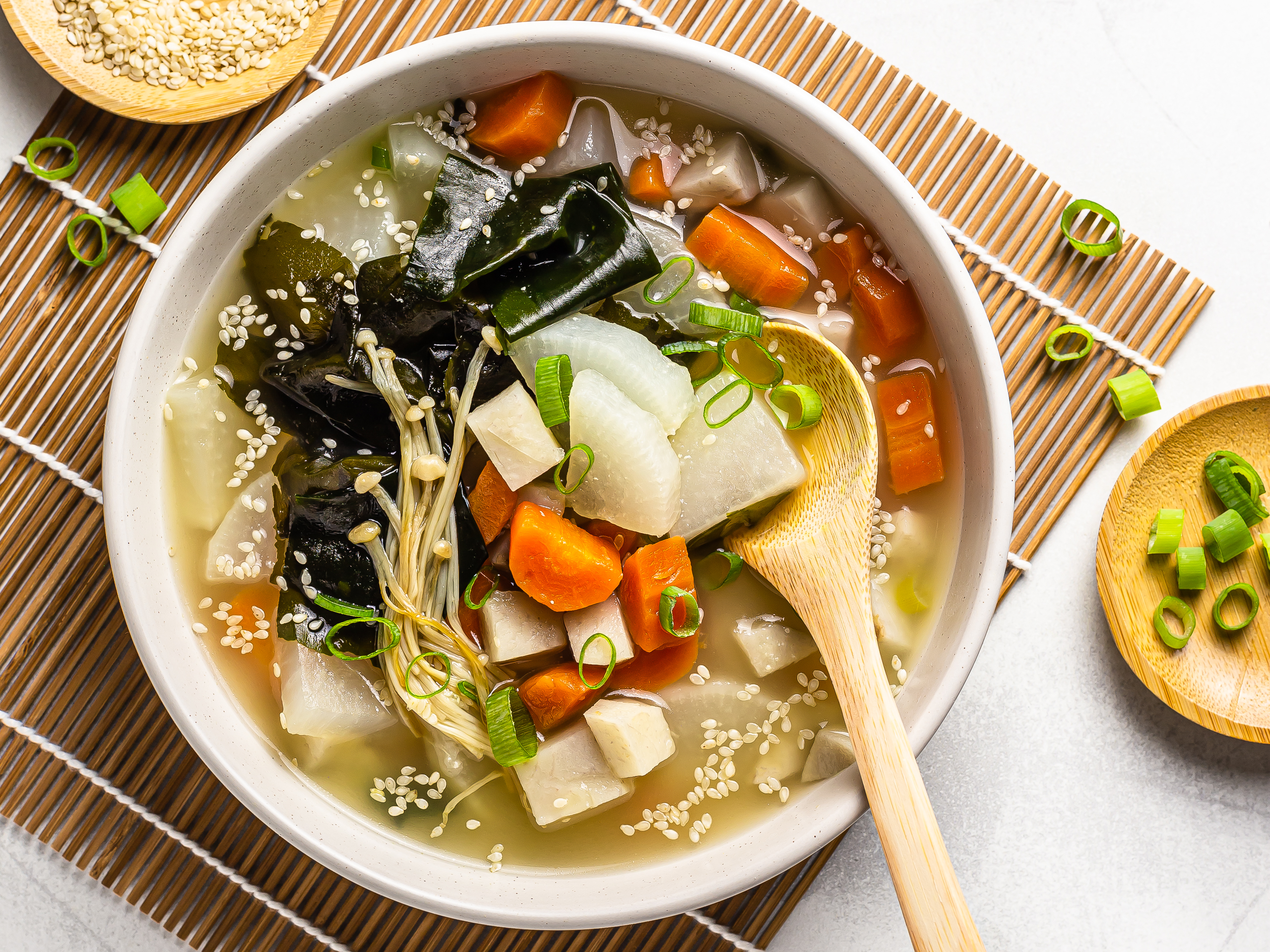Love miso? Did you know that not all miso soups are vegan? Today, we are making a rich miso soup with daikon and other awesome roots veggies. We topped it with sauteed enoki mushrooms for the ultimate umami flavour. And our miso soup is vegan!
Why are not all miso soups vegan, you ask? There are two essential components to miso soups: the stock — called Dashi (出汁) — and the miso paste. The miso paste is vegan, as it's a byproduct of soy. But not all Dashi stocks are vegan: some contain a fish-derived product called bonito flakes (katsuobushi, 鰹節). Well, below we'll show you how to make a vegan dashi broth from scratch using only plant-based ingredients.
Miso soups are often consumed as a small starter before you start the proper feast. That's awesome, but we wanted to make a soup that would stand on its own, as the main course. That's why our soup comes with yummy root veggies that bring a balance of nutrients and flavour.
We looked for veggies common in Japanese cuisine, as we wanted to preserve this famous dish's authenticity. We ended up picking daikon, taro root, carrots, enoki mushrooms, and spring onions. If you can't find enoki mushrooms, you can use king oyster or shiitake mushrooms and cut them into strips.
We loved using these veggies in our miso soup, especially daikon and taro root. They made this classic dish so much more flavourful and filling. If you'll like it as much as we did, there is some good news: daikon is so big, you'll have enough left for another round!
Overall, a big bowl of this daikon miso soup will give you 24% RDI for fibres, 10% RDI of carbs, 9% RDI of fats in just 200kcal. A solid meal and the ultimate comfort soup that bursts with umami flavour.
What is miso soup made of?
Miso soup is a traditional Japanese dish often served at the beginning of a meal as an appetiser.
The classic recipe consists of dashi broth combined with miso paste.
Dashi broth is the main component of miso soup. It's often prepared by simmering kombu and bonito flakes in hot water.
Kombu, or kelp, is an edible seaweed very popular in East Asian cuisine, and you can find it as full sheets or cut into pieces. When preparing miso soup, add the kombu to cold water, bring it to a near-boiling point, and then strain the liquid.
Bonito flakes, also known as katsuobushi, are shavings of fermented, preserved fish. They are added to the hot water, left to steep for a few minutes, and then removed.
Finally, miso paste is dissolved a bit of hot broth and then added to the dashi stock before serving.
The result is a rich yet simple soup with a unique umami flavour.
Is miso soup vegan?
Not all traditional Japanese miso soup recipes are vegan, as some contain fish.
This is because the dashi stock, which is the base of the miso soup, is often prepared with bonito flakes. Bonito flakes, or katsuobushi, are shavings of dried fish (either tuna or bonito).
To make miso soup vegan, you can simply omit the bonito flakes and use mushrooms to replace the umami flavour.
We used enoki mushrooms in our daikon stew recipe, but feel free to use other varieties like shiitake or king oyster mushrooms.
What is the best type of miso paste for miso soup?
Miso paste is made from soybeans fermented with salt and koji (a type of fungus)[1].
You can find miso in three varieties:
Red Miso (akamiso)
White Miso (shiromiso)
Yellow or Mixed Miso (awase)
You can use any of them to make miso soup, so it's up to your personal preferences. White miso paste is the lightest and mildest of the three as it's fermented for the shortest amount of time. Red miso paste, instead, has the strongest flavour due to its longer fermentation period.
We used white miso paste.
Ingredients
| Garlic Mushrooms | |
| Enoki Mushrooms (or Shiitake) | 180 g |
| Canola Oil | 1 tbsp |
| Sesame Oil | 1/2 tbsp |
| Garlic Cloves | 2 |
| Miso Soup | |
| Wakame (Dried Seaweed) | 12 g |
| Carrots | 200 g |
| Daikon | 280 g |
| Taro | 250 g |
| Spring Onion Stalks | 2 |
| Water | 2 L |
| Kombu (Dried Kelp) | 16 g |
| White Miso Paste | 70 g |
| Toppings | |
| Sesame Seeds (optional) | 2 tsp |
Step 1
Add the dried wakame to a bowl and cover them with warm water. Leave them to soak at room temperature for 15 minutes.
The seaweed will absorb water and swell a lot, so you won't need to use too much of it.
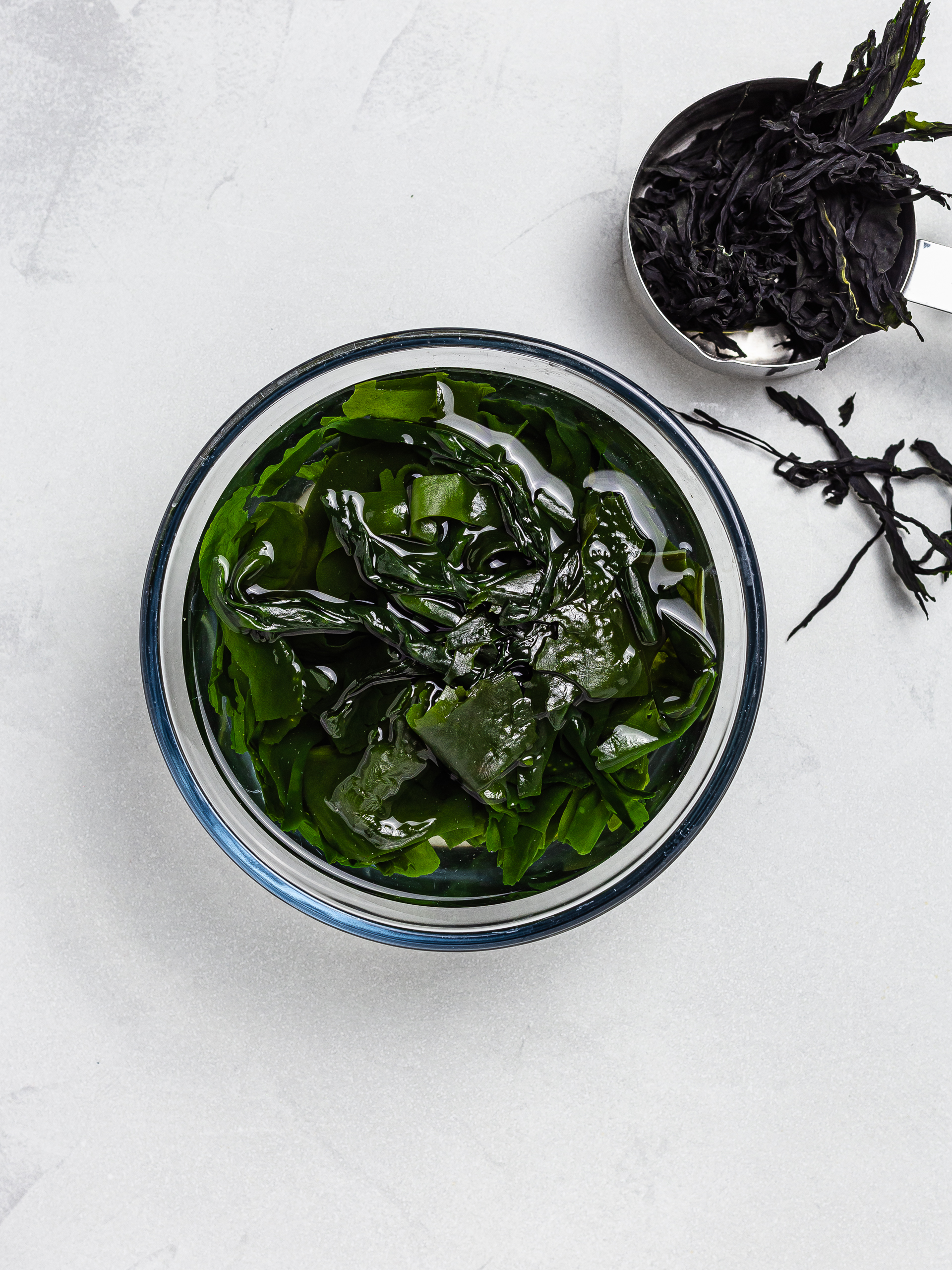
Step 2
In the meantime, let's get the soup vegetables ready.
Peel the carrots, daikon, and taro root. Then, dice them into cubes.
Next, slice the spring onions, discarding the white section of the stalk.
Finally, cut off the base the enoki mushrooms and remove any brown bits. Rinse them well and then pat them dry with kitchen paper.
Now, drain the wakame seaweed and set it aside.
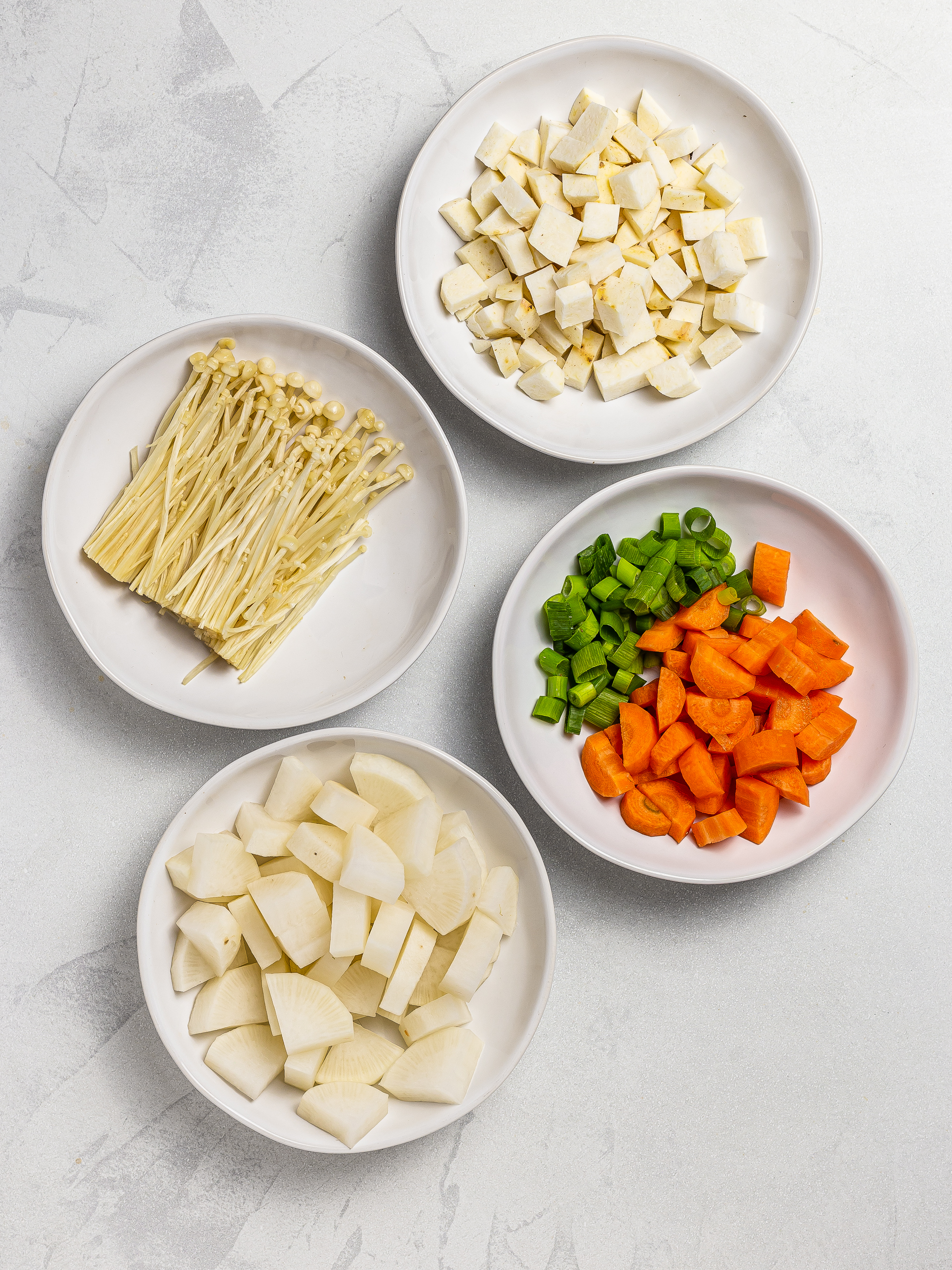
Step 3
Now, let's make the vegan dashi broth which we'll use a miso soup base.
Fill a stockpot with the given water and add the dried kombu.
Bring to a boil and then remove the cooked seaweed.
You can now remove any white foam that appears on the surface of the broth using a fine-mesh sieve or skimming it off with a spoon.
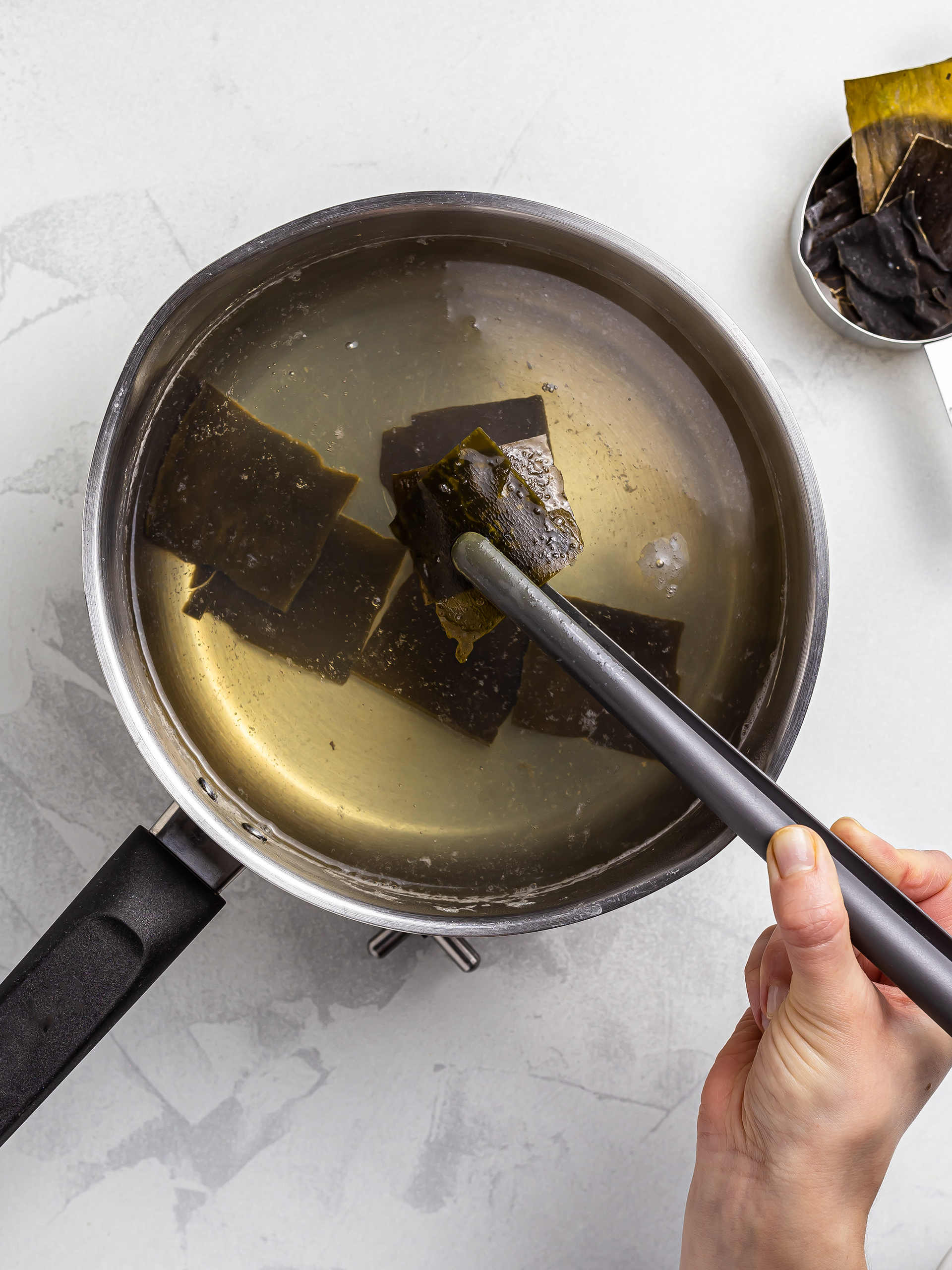
Step 4
Next, add the prepared carrots, daikon, and taro to the dashi broth.
Bring back to a boil and then simmer for 15 minutes.
If more foam appears on the surface of the soup, skim it off.
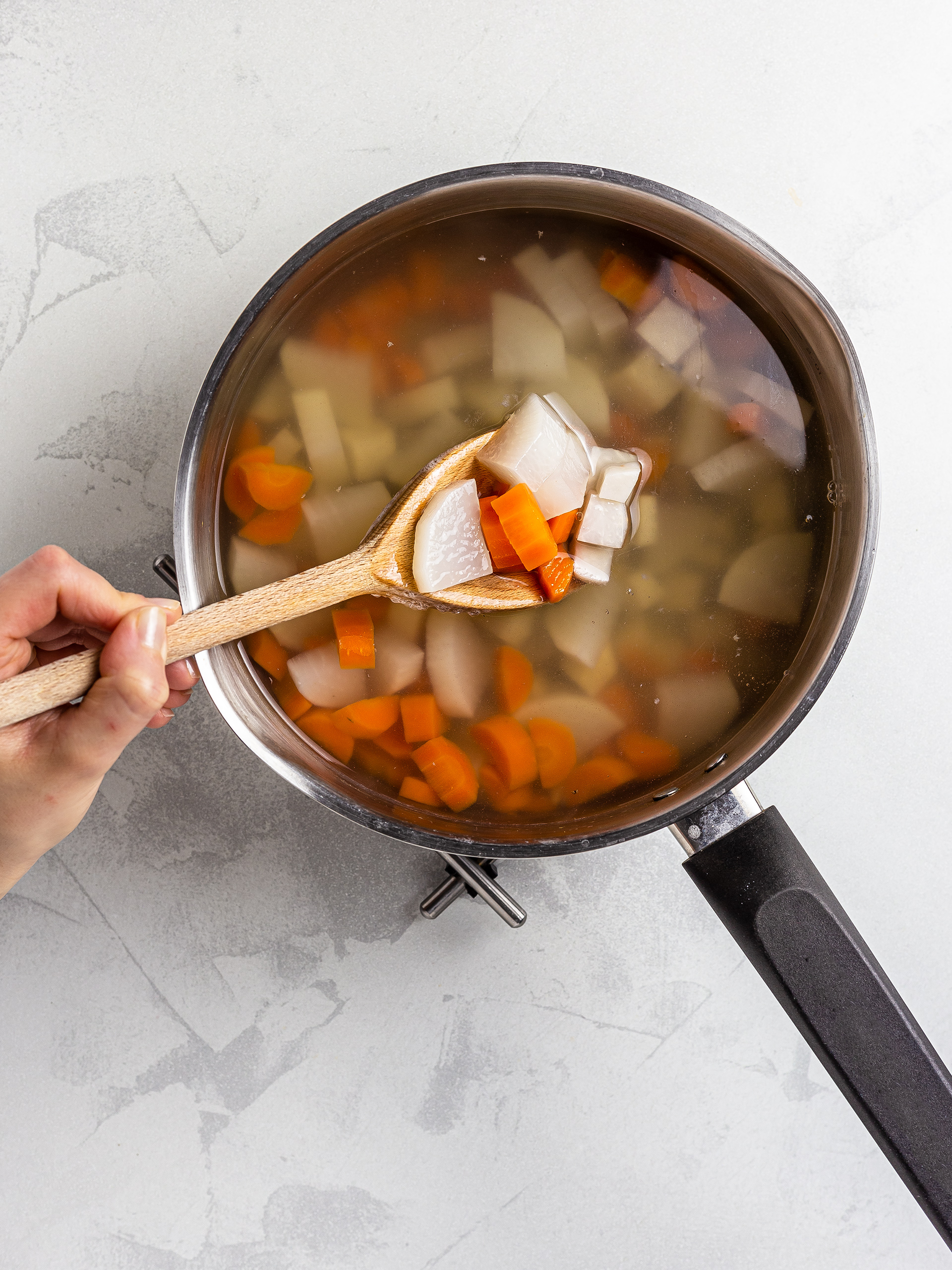
Step 5
While the vegetables simmer, let's cook the mushrooms.
Sizzle crushed garlic with the vegetable and sesame oil in a skillet for one minute.
Then, add the enoki mushrooms and sauté for 5 minutes.
To avoid getting them all entangled, turn them gently, keeping them straight and apart.
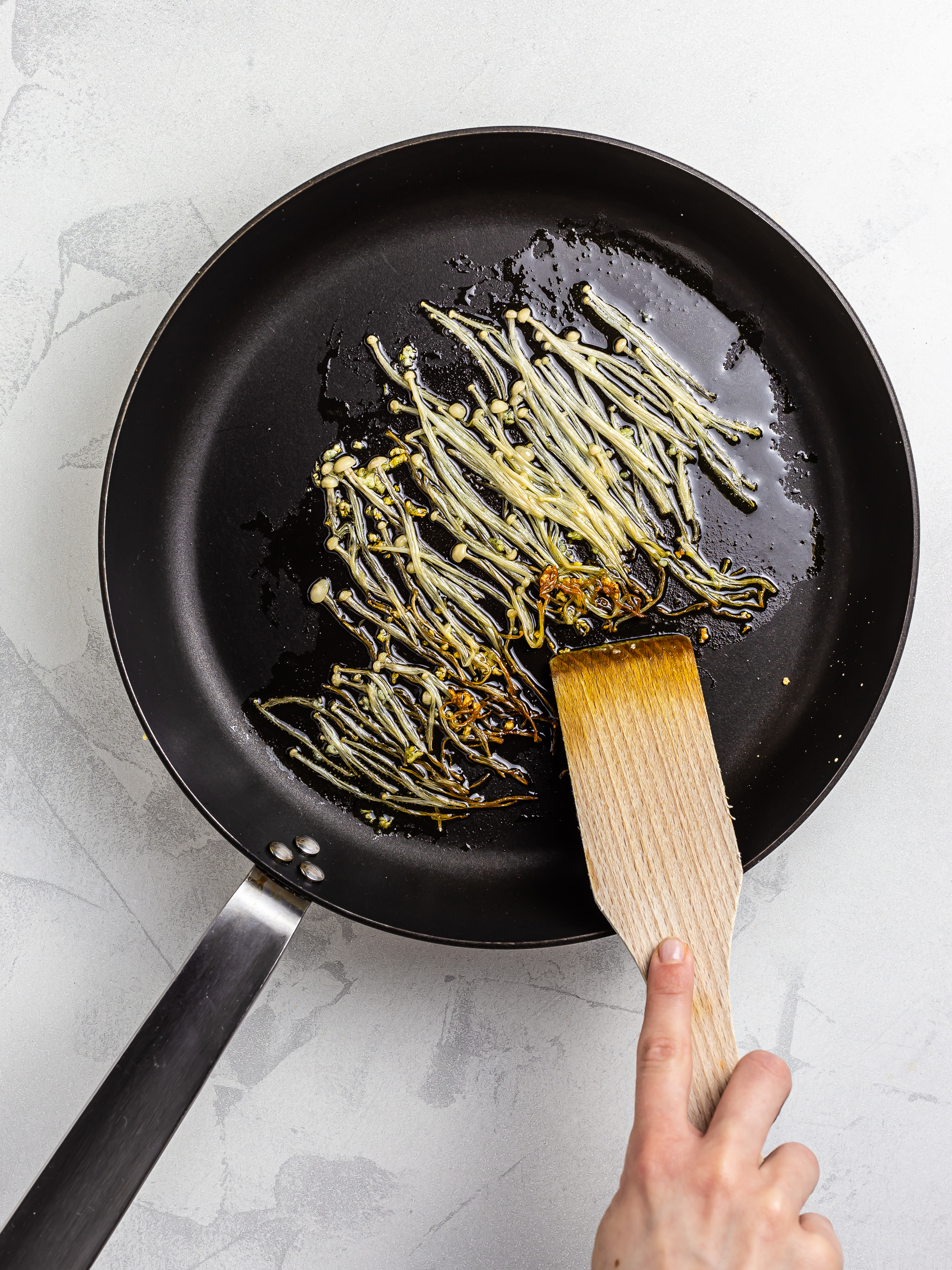
Step 6
Now, add the wakame seaweeds and spring onions to the daikon soup.
Cook all for 3 more minutes and then remove the pot from the heat.
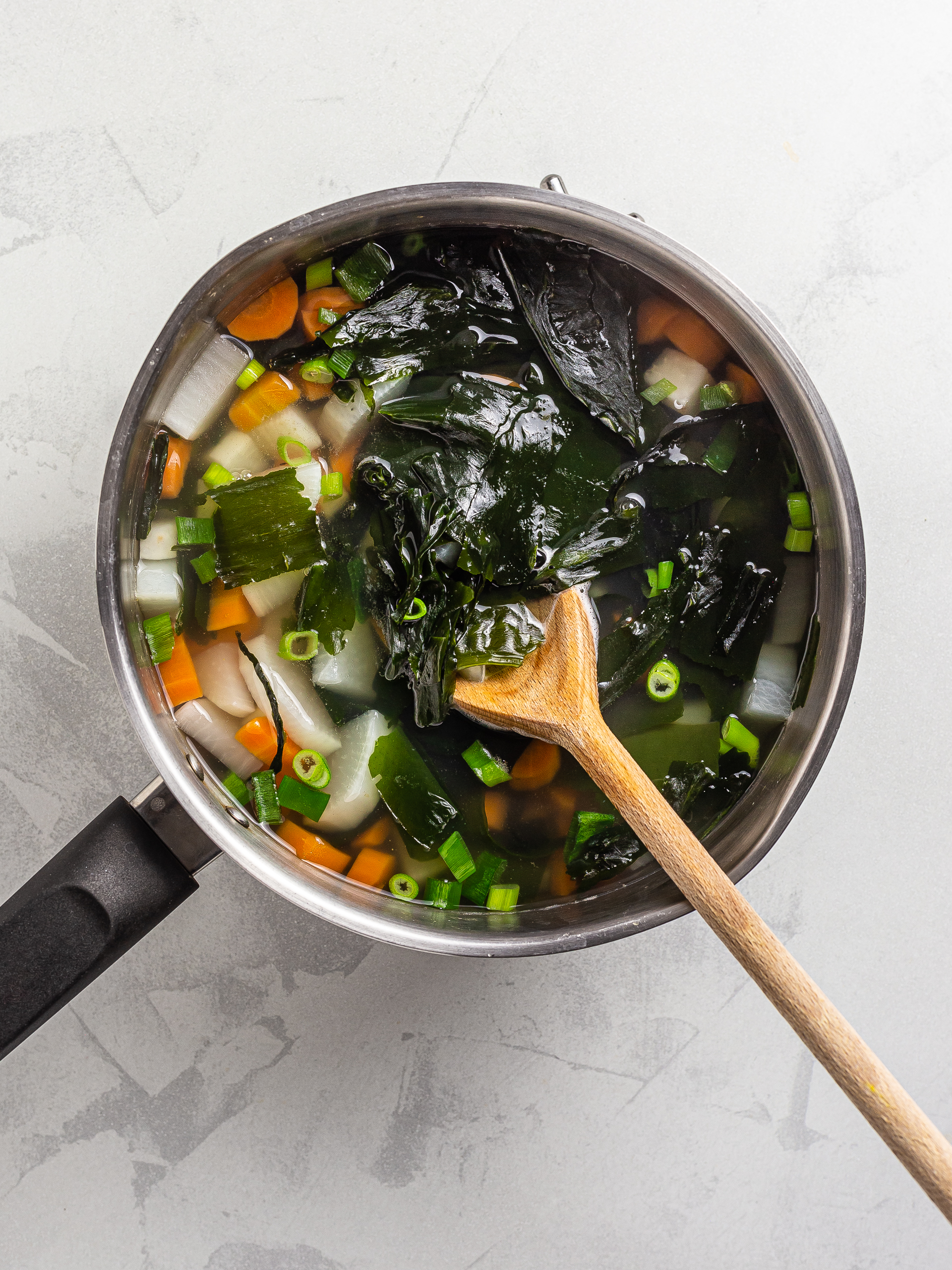
Step 7
In a bowl, whisk the white miso paste with a ladle of broth until dissolved (1).
Then add the miso mixture to the vegetable soup and stir well.
Finally, divide the miso soup among bowls, top it with the garlic mushrooms, and garnish with sesame seeds, if desired (2).
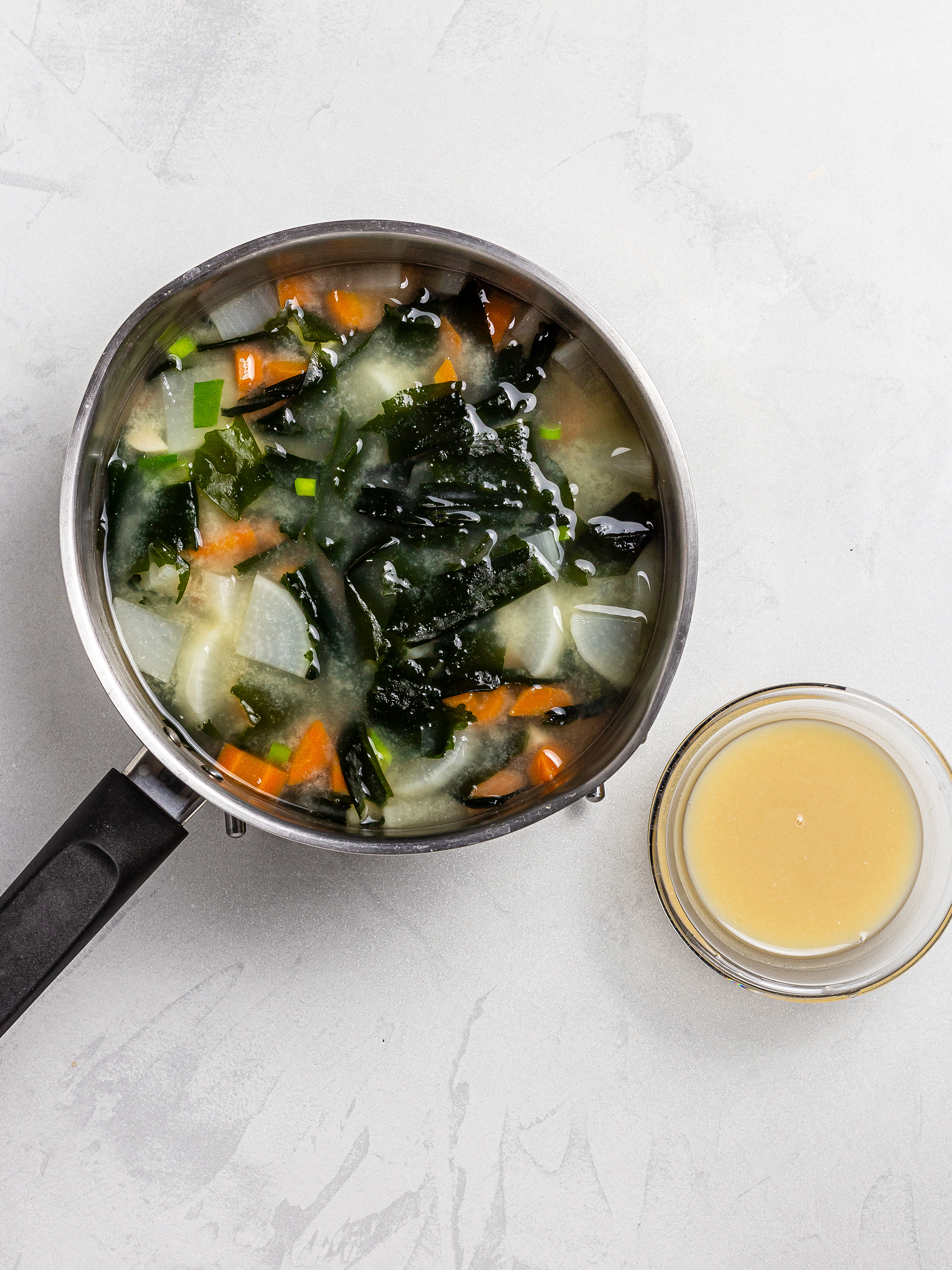
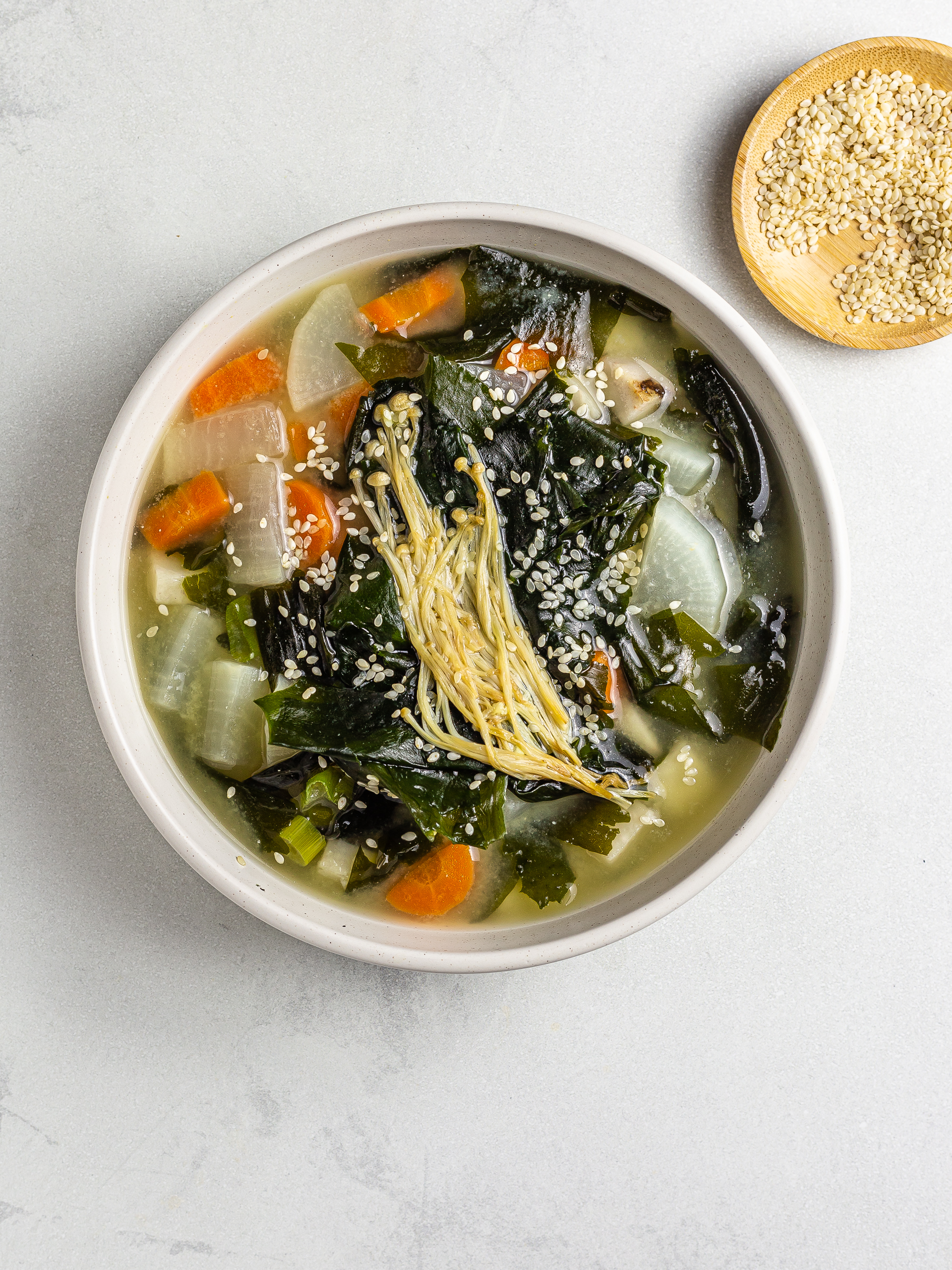
Tips
Sprinkle the daikon soup with chilli flakes before serving it for a spicy kick.
If you have leftover enoki mushrooms, you can use them to make a quick veggie fritter following our egg-free enoki pancake recipe.
